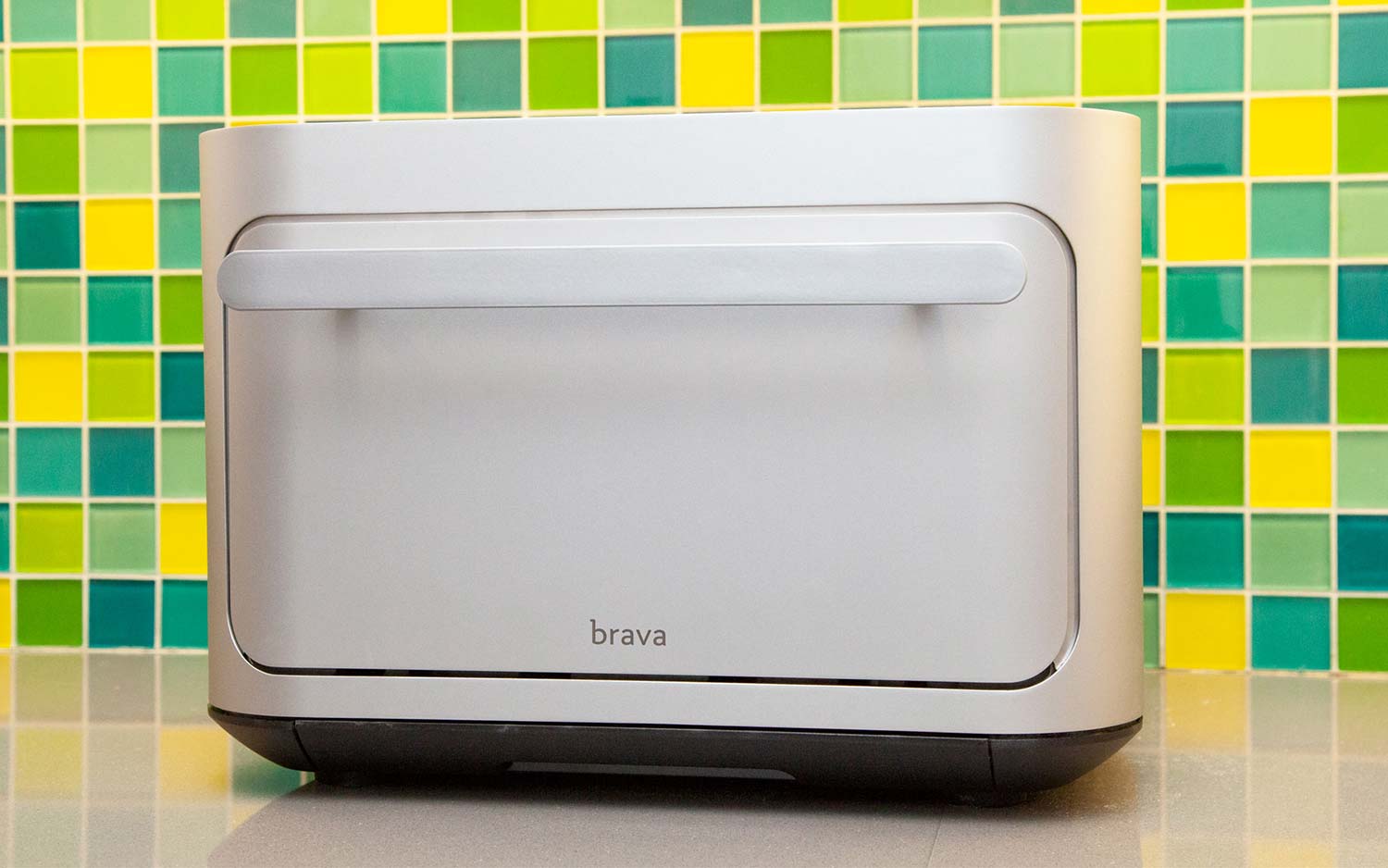Tom's Guide Verdict
A bit too pricey. If you're going to spend money on a smart oven, the Brava was slightly better at cooking than the June, but not enough to justify its much higher price.
Pros
- +
Cooks fast, cooks great
- +
Camera lets you monitor cooking remotely
Cons
- -
Expensive
- -
Requires subscription to get all features
- -
No door in front
Why you can trust Tom's Guide
It will cook you the perfect steak every time. It will bake chocolate chip cookies so that the edges are crispy but the insides are gooey. And it will turn out roast a chicken that's better than your grandmother's.
Brava's smart oven uses a combination of sensors and intelligence to ensure your food gets cooked correctly every time, and it's internet-connected so it can not only get updated with new recipes and features but also let you control it with your phone. At $1,095, plus a $10/month subscription, however, you might be stuck eating nothing but ramen.
Design
Wrapped in spotless aluminum (until you splash some grease on it), the Brava oven is as sleek a countertop appliance as you could ask for, but a few co-workers wondered why I was setting up a 3D printer in the staff kitchen.
Most of the top of the Brava is covered with a heat-resistant silicone mat, useful for resting hot dishes. Toward the front is a 5-inch color touch screen, through which you can control the oven, look up recipes and watch instructional videos. It's somewhat small, but it works. To the right is a large circular button you press to start the oven. The button is ringed with an LED, which changes color depending on its status.
"I wonder why it smelled like my grandma's house" commented one co-worker.
The door opens and closes with a nice amount of force, but the one thing that I wish the Brava had? A window in the door. Yes, you can use both its small touch screen and your smartphone to see what's going on inside, but I miss the ability to actually look through the front and see my steak cooking.
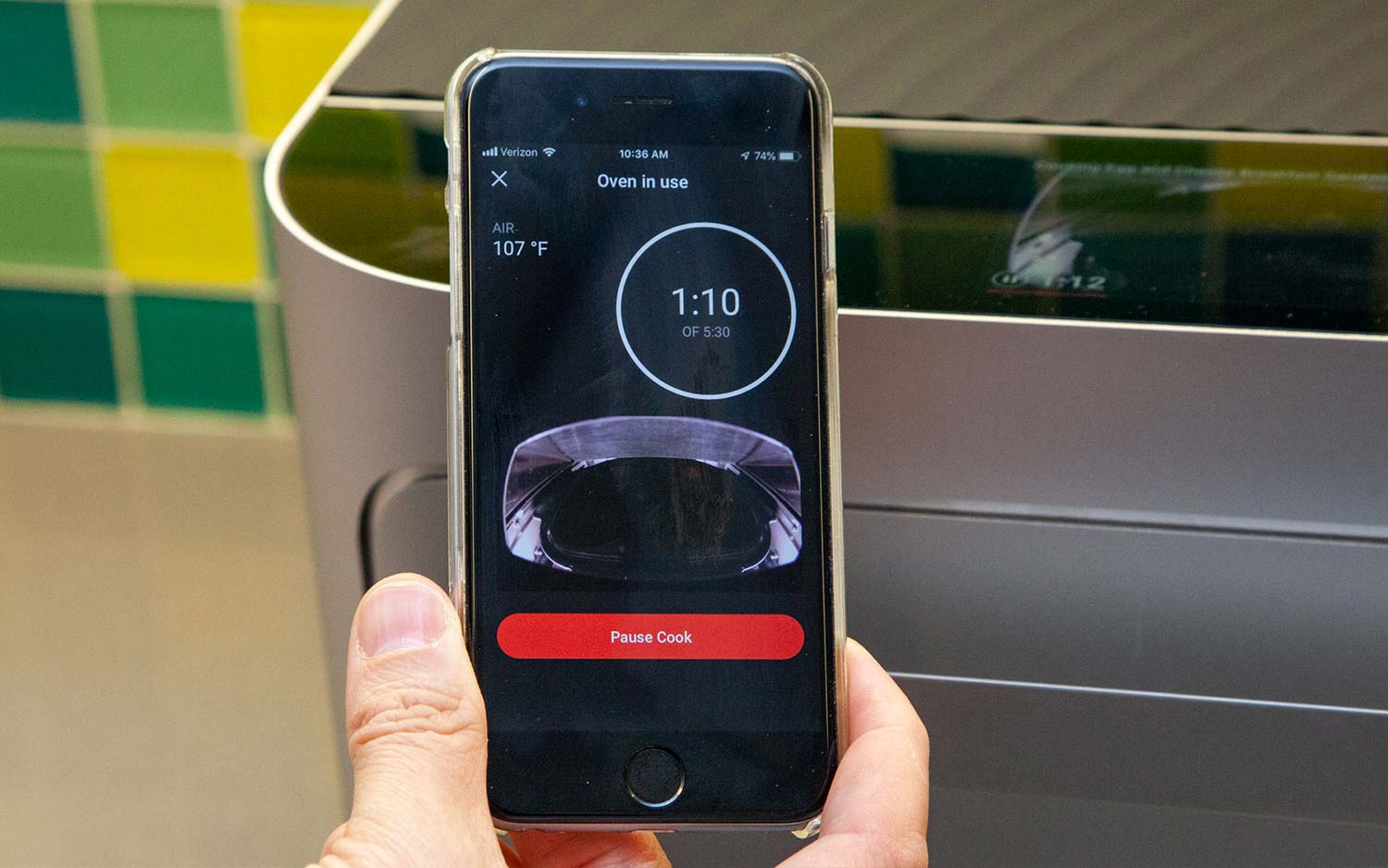
Measuring 17.3 x 16.4 x 11.3 inches, the Brava is a bit larger than your typical toaster oven but takes up less space than the June (19.6 x 19 x 12.75). However, this means the inside of the Brava is smaller, too, which made it more difficult to fit anything larger than a chicken inside.
How the Brava works
Unlike traditional ovens, which use either gas or electricity to heat the air, Brava's smart oven uses infrared elements that can mimic various cooking methods. For example, the elements will tune to a specific frequency for searing, another for roasting and another for baking. Each of these elements can be independently controlled, letting you cook different items in the oven at the same time. Brava claims that its technology can also cook things faster than a conventional oven.
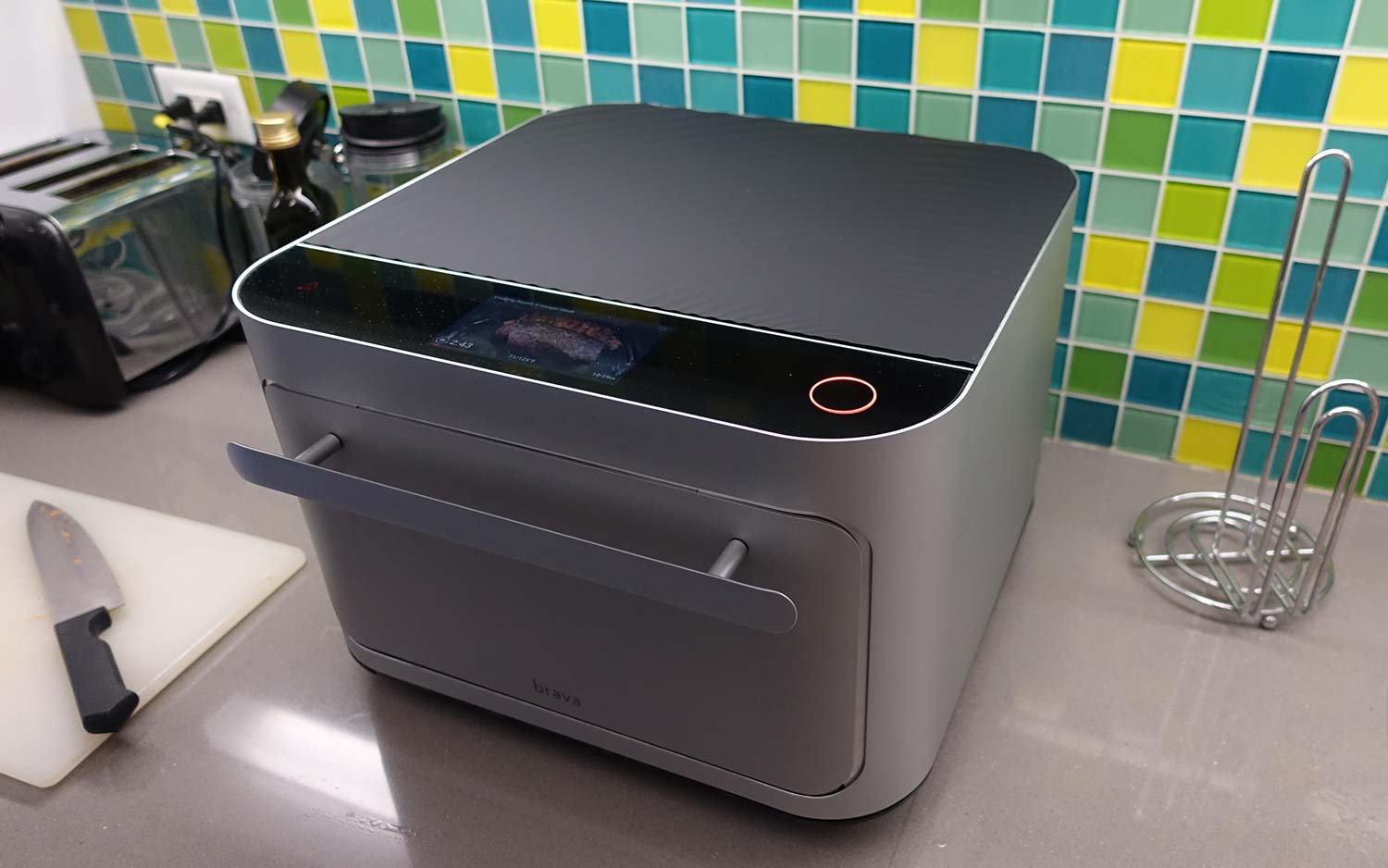
It will switch between these modes based on a host of sensors inside the oven, which look at various things — the air temperature, the temperature inside what you're cooking and even the particles coming off the food.
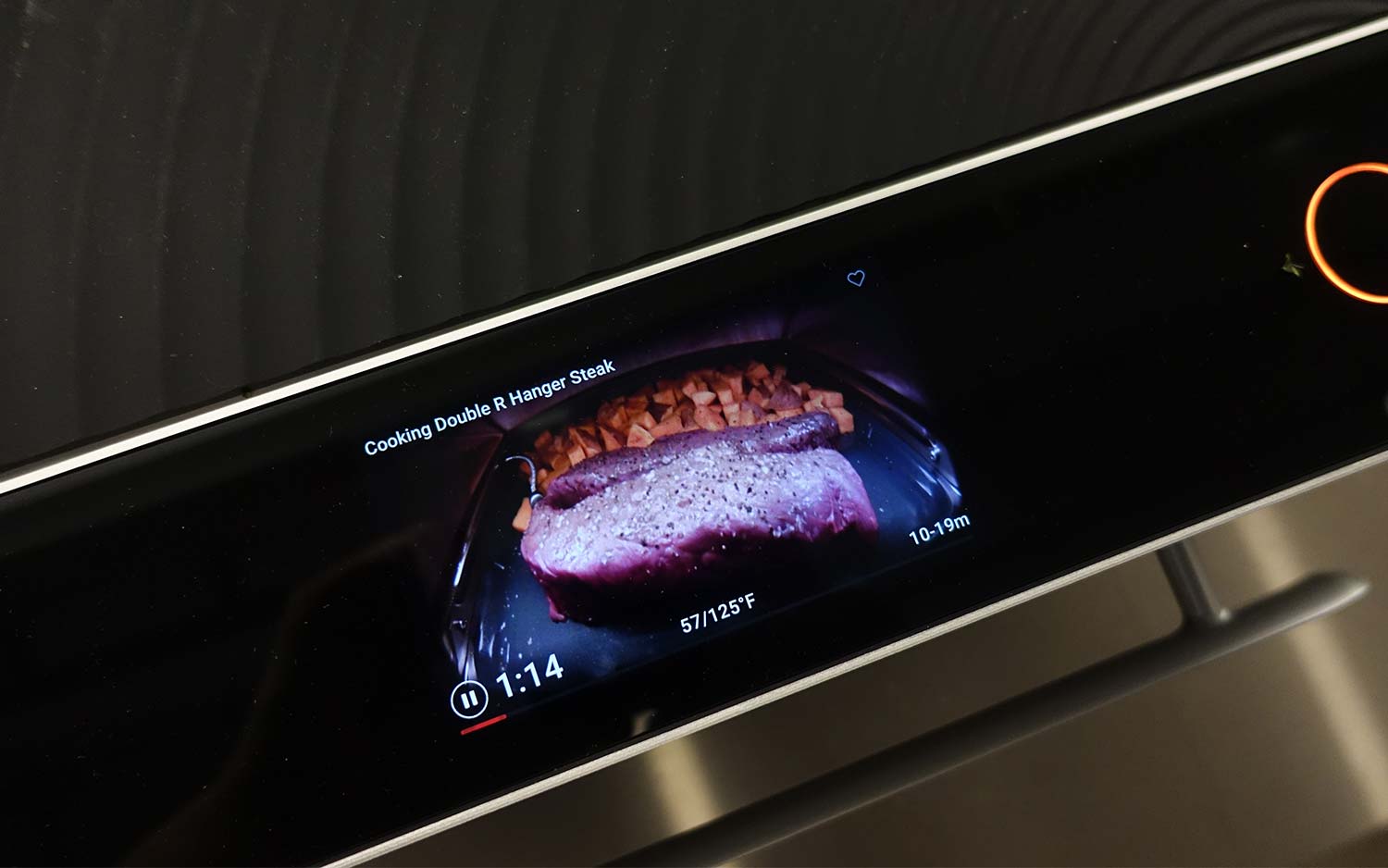
The Brava also has a camera inside the oven that measures the doneness of whatever you're cooking. You can also see what the camera is seeing through the Brava's screen as well as on its mobile app (Android and iOS).
MORE: Traeger's Ironwood 650 Smart Grill Will Turn You Into a Pitmaster
June, the other smart oven on the market, also has an interior camera, but it can also recognize food on sight, so you don't have to pick something from a menu. With the Brava, you have to select what you want to cook from its touch screen or through the app on your smartphone. Yes, it's easy to use, but it's a little less magical.
Competing interfaces
Brava organizes its recipes differently on the app than it does on the oven itself, which can make things confusing.
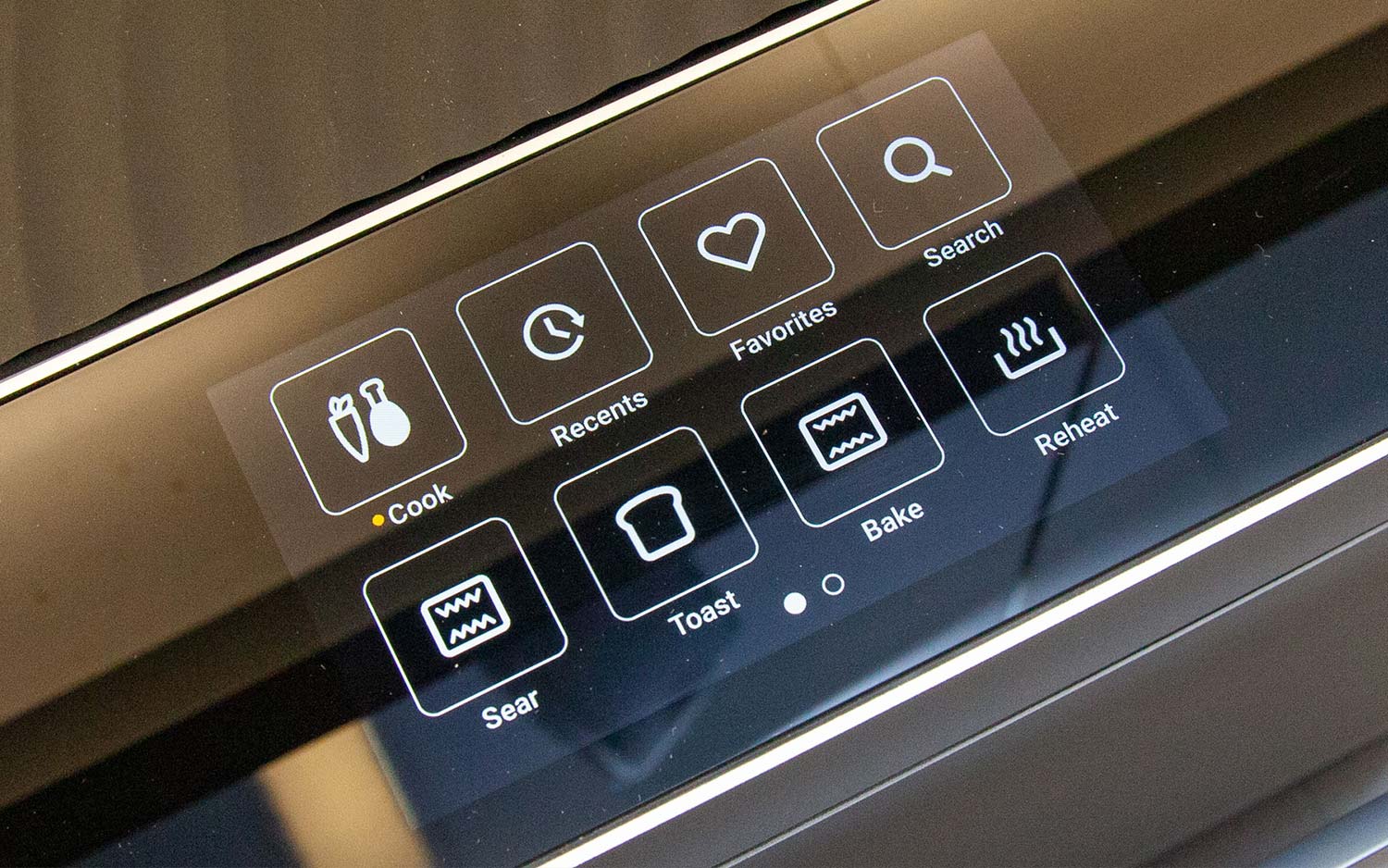
On the oven, you can search for recipes by main ingredient — chicken, beef, vegetables, etc. — but on the app, they're organized by meal (breakfast, lunch, dinner, starter, sweets, etc.). What's more, not all the recipes on the oven are in the app. For example, I tried looking up a chocolate chip cookie recipe on the oven itself, but couldn't find anything. The app had a single recipe.
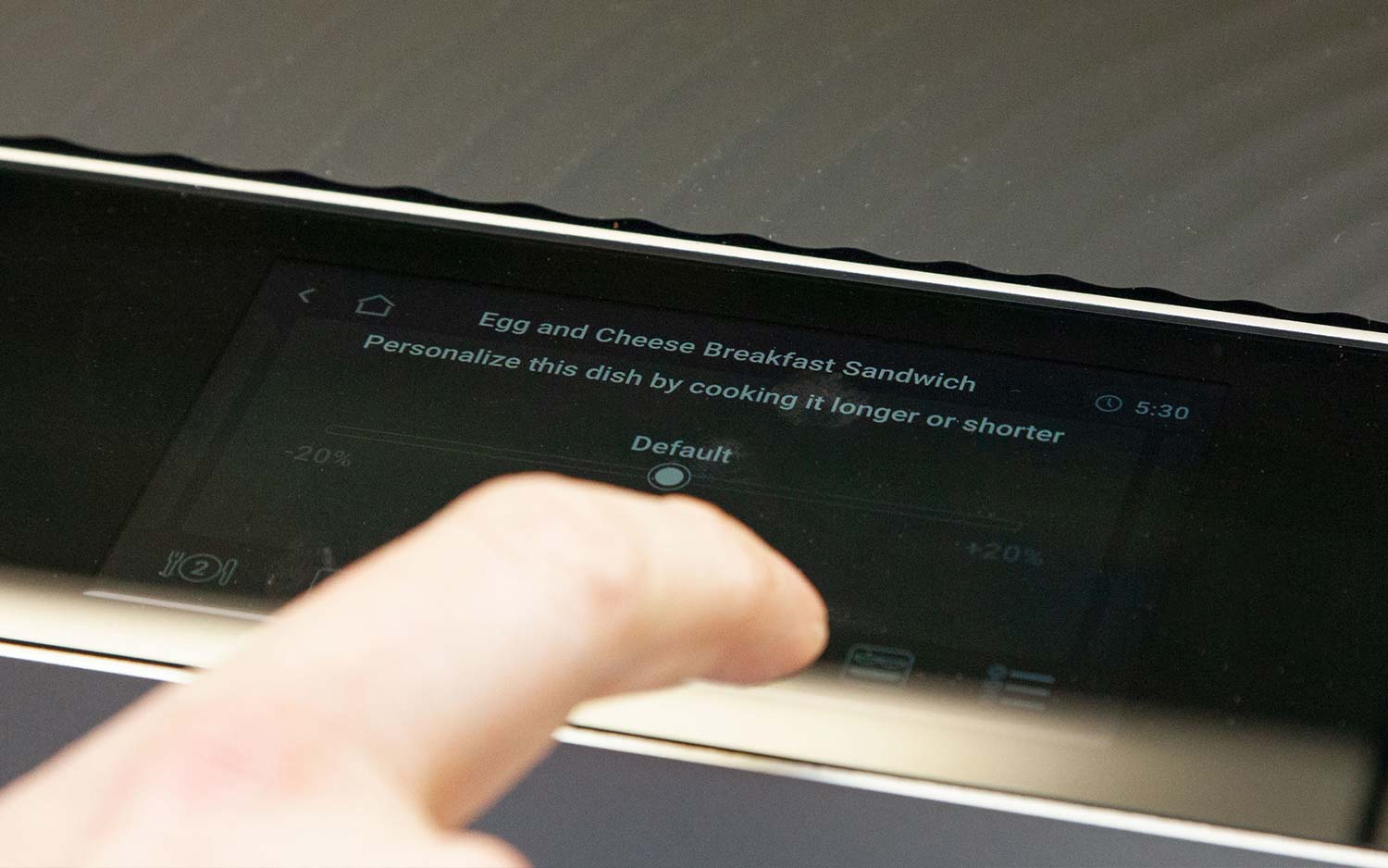
Because it's connected, the Brava oven seemingly had new recipes and features every time I went to use it. One of the latest updates included a recipe for cooking a Beyond Burger.
MORE: Taste Test: This Chain Serves the Best Impossible Burger
The app has a search function, but I found it harder to find things on the app than on the oven itself. For example, a search for "potato" on the app brings up a list that starts with recipes for Pork Ribs Arrabiata, Braised Short Ribs, and Sausage, Potato and Brussels Sprouts. Meanwhile, on the oven itself, when I searched for potatoes, it gave me the options for fingerling, sweet, russet, Yukon Gold and more, and it gave me multiple ways of cooking each.
Time to get cooking
The week or so I spent testing the Brava and the June smart ovens, I was pretty popular with my co-workers.
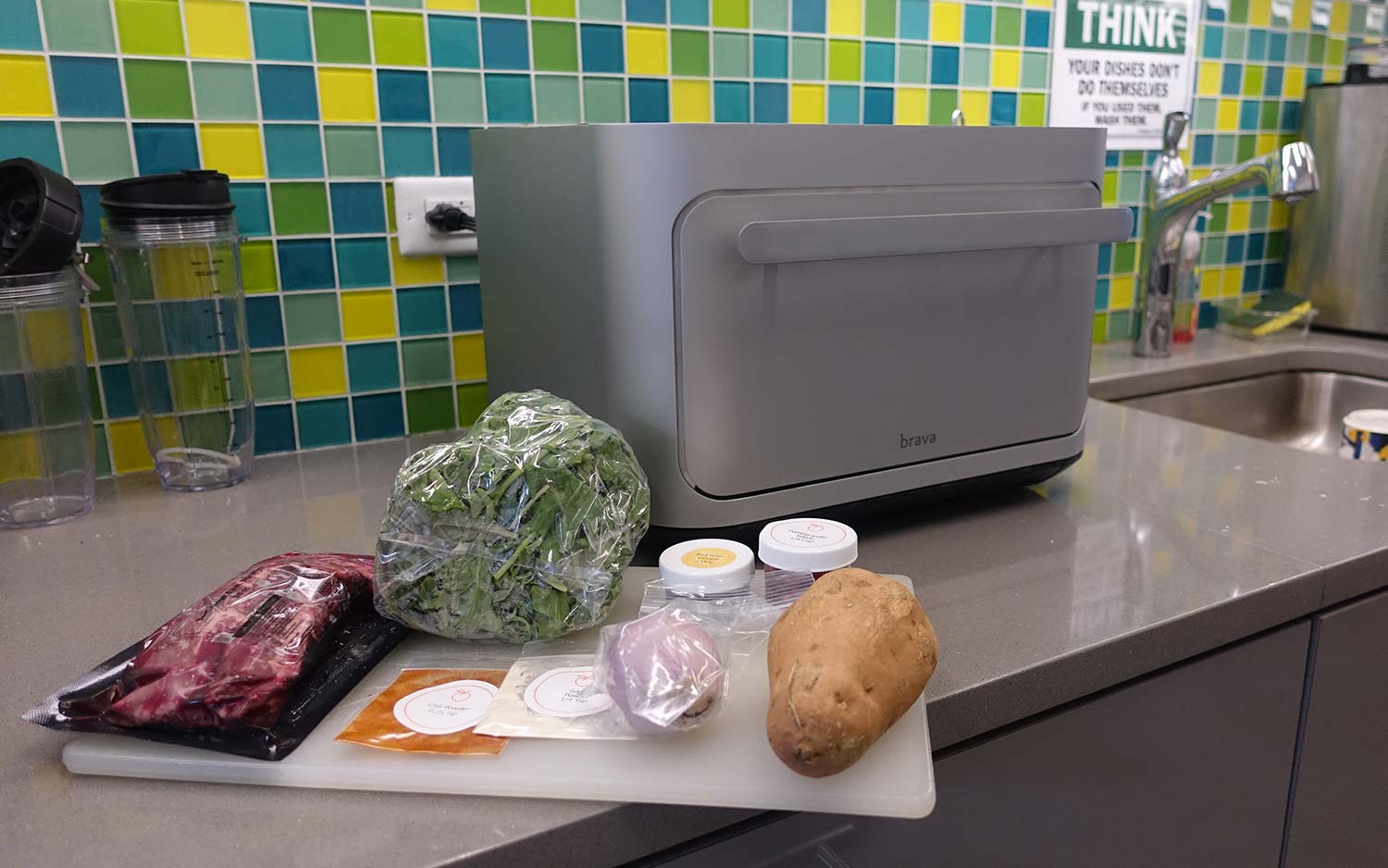
The first food I cooked came in a meal kit from Brava: the Double R hanger steak with sweet potatoes and a kale salad. (The company currently offers 23 meal kits, which include various kinds of tacos, Moroccan-spiced chicken, a portobello burger and a Vietnamese Noodle Bowl).
MORE: Whirlpool's New Oven Is Smart Enough to Be Your Sous Chef
The kit arrives with just about everything you need, except for olive oil and salt and pepper.
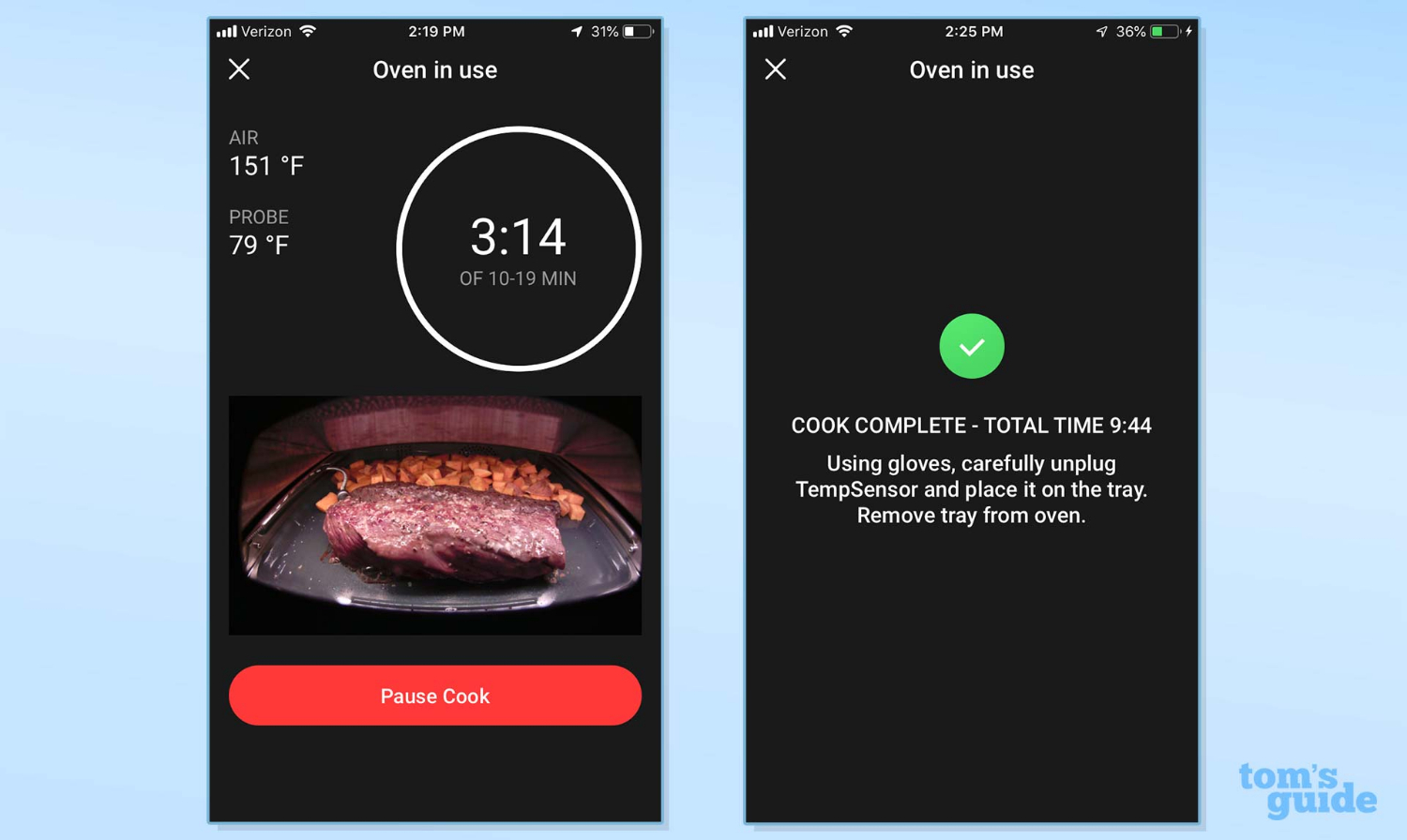
Because the Brava can cook different foods at the same time, I was able to place both the steak and the sweet potatoes (the latter cut into 1/2-inch cubes) on the same tray and have them finish at the same time.
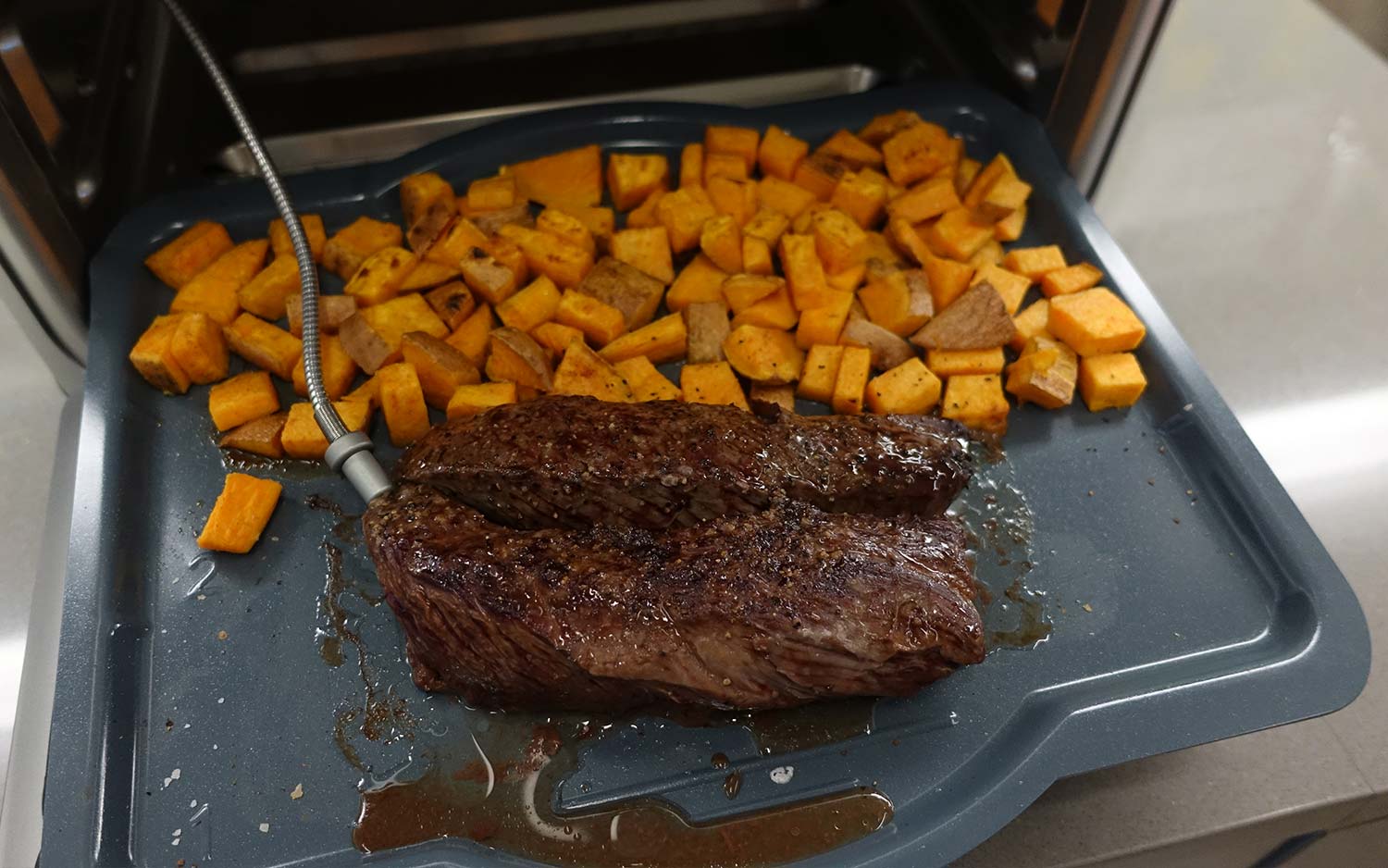
After 9 minutes and 44 seconds, the steak came out medium rare, and the sweet potatoes were tender and a little charred. However, juices from the steaks dripped over to the potatoes, which kept them from getting crispier on the bottom. Also, the recipe said to slice the steak immediately to "stop the cooking process," but doing so caused a lot of juices to run out. I recommend letting the steak rest for at least a few minutes.
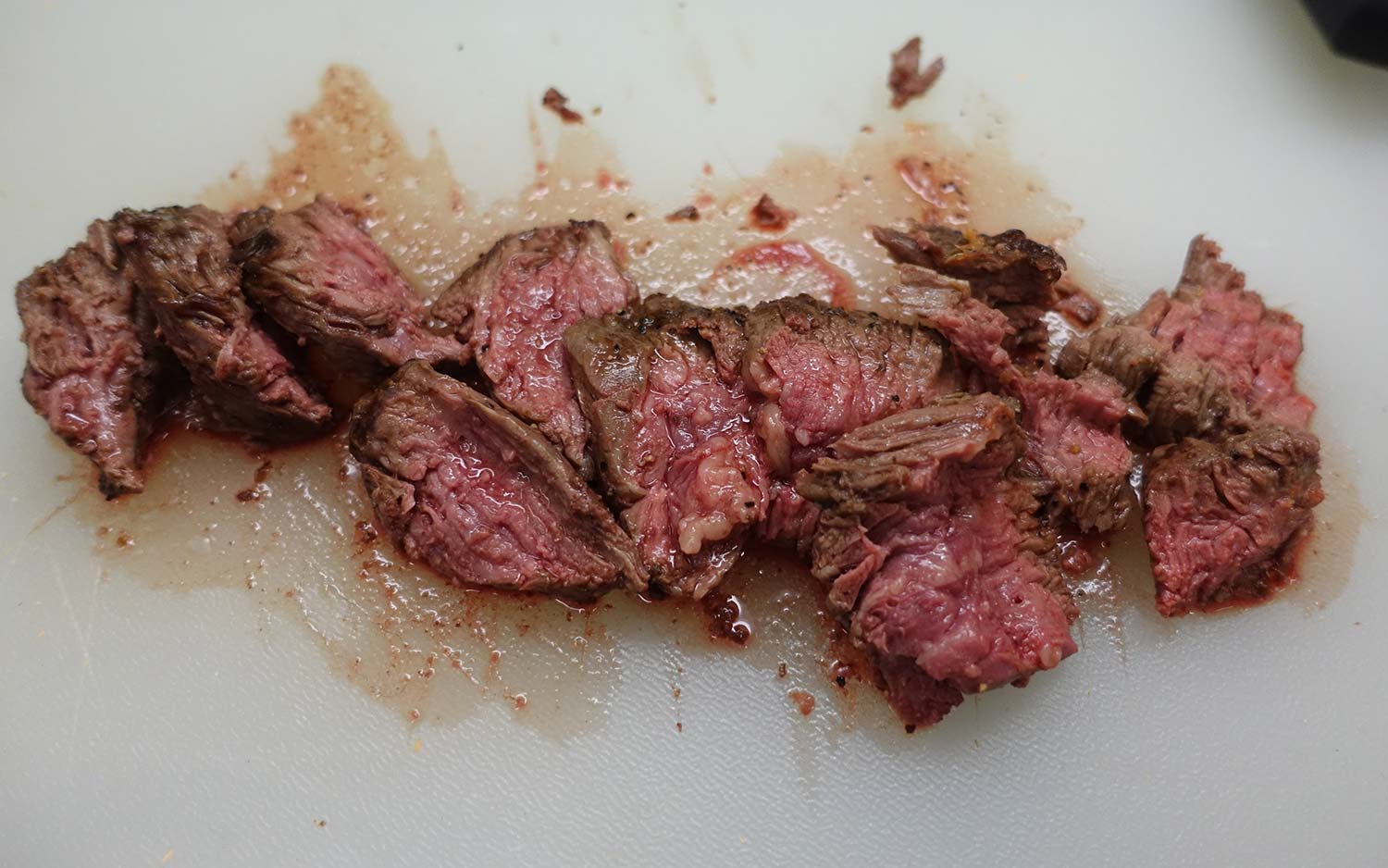
We then used both the Brava and the June ovens to cook a New York strip to medium rare. Here, the Brava came out slightly ahead, as it was able to put a terrific sear on both the top and bottom of the steak, while still keeping the center a nice pink hue. The June took a few minutes longer and wasn't able to put as good a sear on the top of the steak.
A camera inside
While the steak and potatoes were cooking, I watched them with increasing hunger from my smartphone, which shows a live feed from the camera inside the Brava. I wish there were one light that remained on inside the oven the entire time, though, so I could clearly see what was cooking. Also, the Brava's camera is at the front of the oven, so it's hard to see if you have something that's toward the rear.
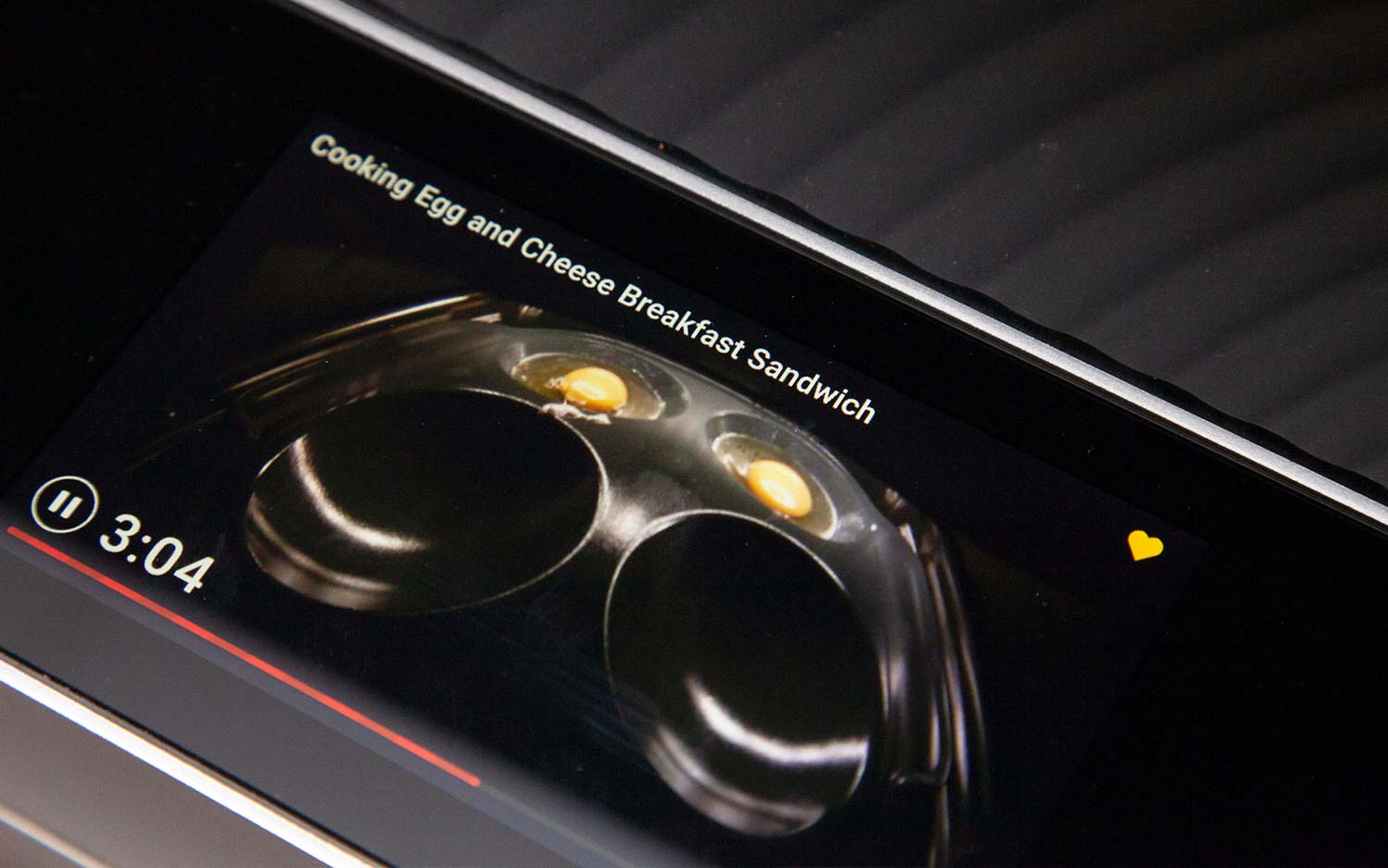
The camera in the June oven, by contrast, is located in the center of the top, so you can see everything clearly. And, June's app even records a time-lapse video of the entire cooking process, which is a fun feature.
Breakfast sandwiches
Another morning, I treated everyone to egg-and-cheese breakfast sandwiches. This recipe uses both the optional egg tray as well as the standard metal tray that comes with the oven. Again, it couldn't have been simpler: I cracked an egg in one of the depressions in the egg tray, and then put slices of bread with cheese on the other tray, below.
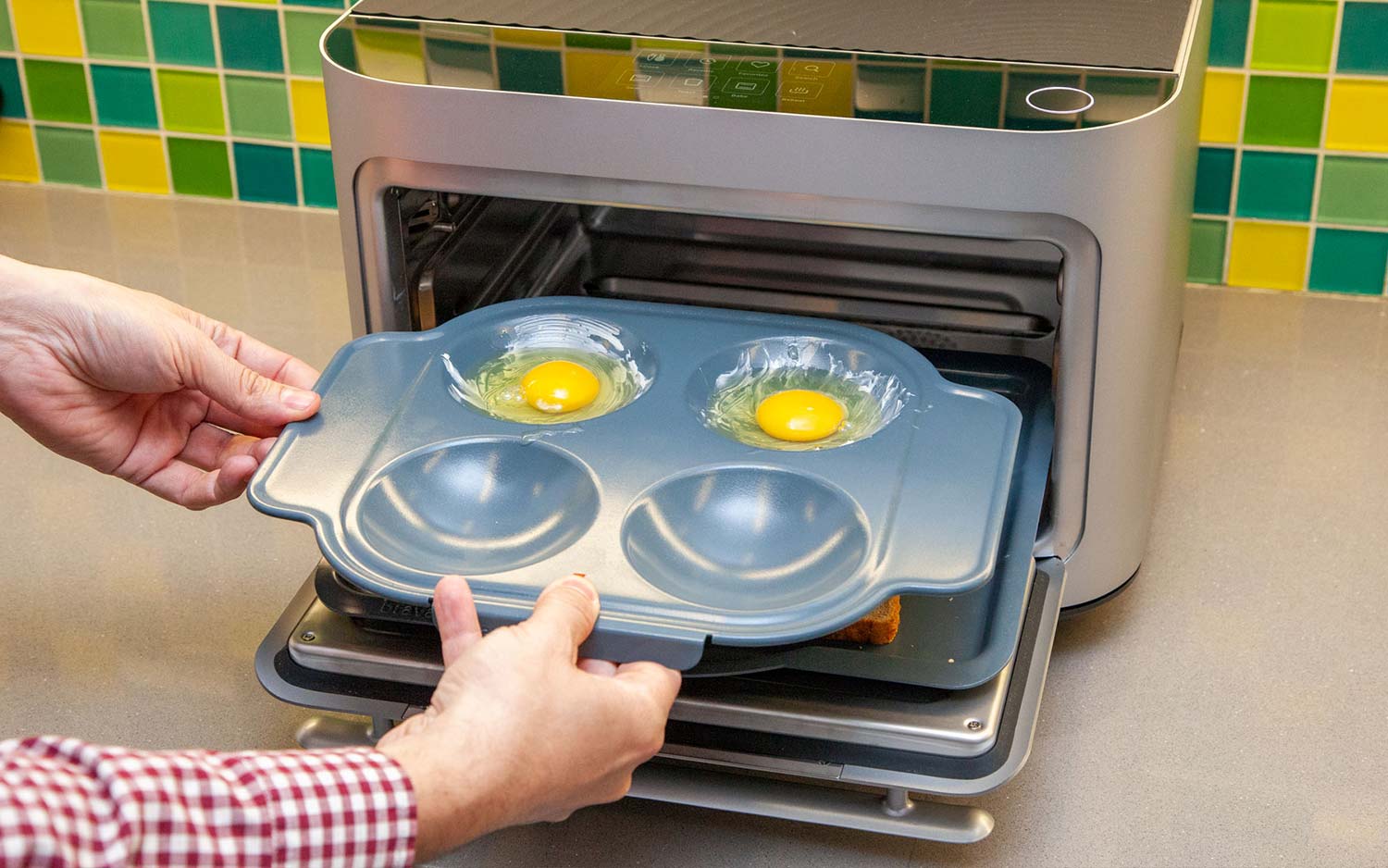
After a 5-minute cook in the oven, I had a perfectly runny fried egg and gently toasted bread with melted cheese. (You have to assemble the sandwiches yourself). Due to the limited space in the oven, you can only make two sandwiches at a time.
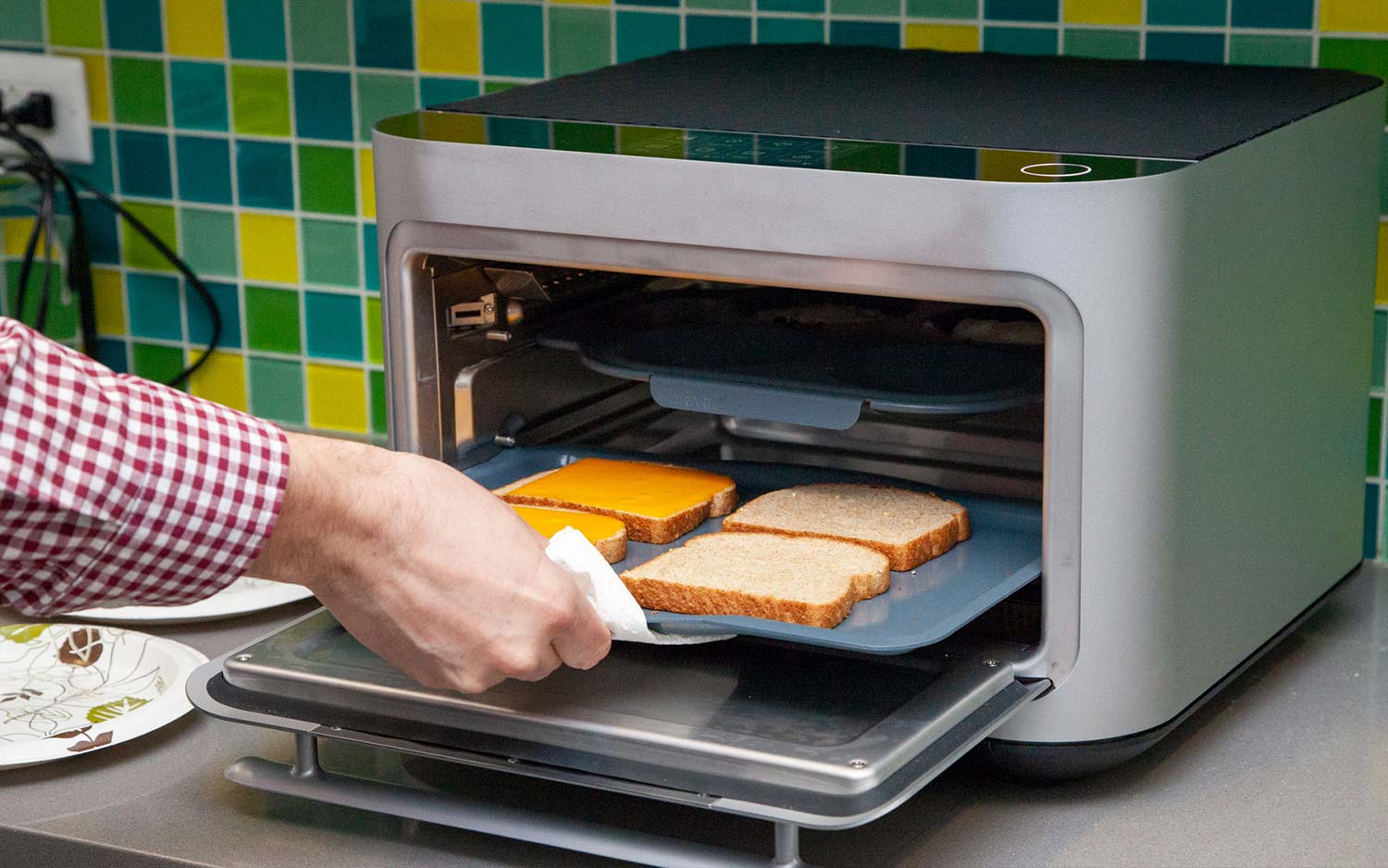
The June oven also has a breakfast sandwich recipe, and only the June also includes bacon. It takes about twice as long to prepare, though, and you have to add the egg to a hot pan halfway through.
Roast chicken
Another winner was the roast chicken dinner. A 4.5-lb. chicken (seasoned with salt, pepper, oregano, thyme, parsley and paprika) just fit inside; any larger, and it would have scraped the top of the oven's interior. It took exactly 1 hour and 1 minute to roast the chicken, during which time, the interior of the oven never got above 270 degrees. It was a little more seared on the top than I'd like, but otherwise came out great. The skin was crispy, the meat was juicy and it was cooked to perfection. All my co-workers agreed. "I wonder why it smelled like my grandma's house" commented one co-worker.
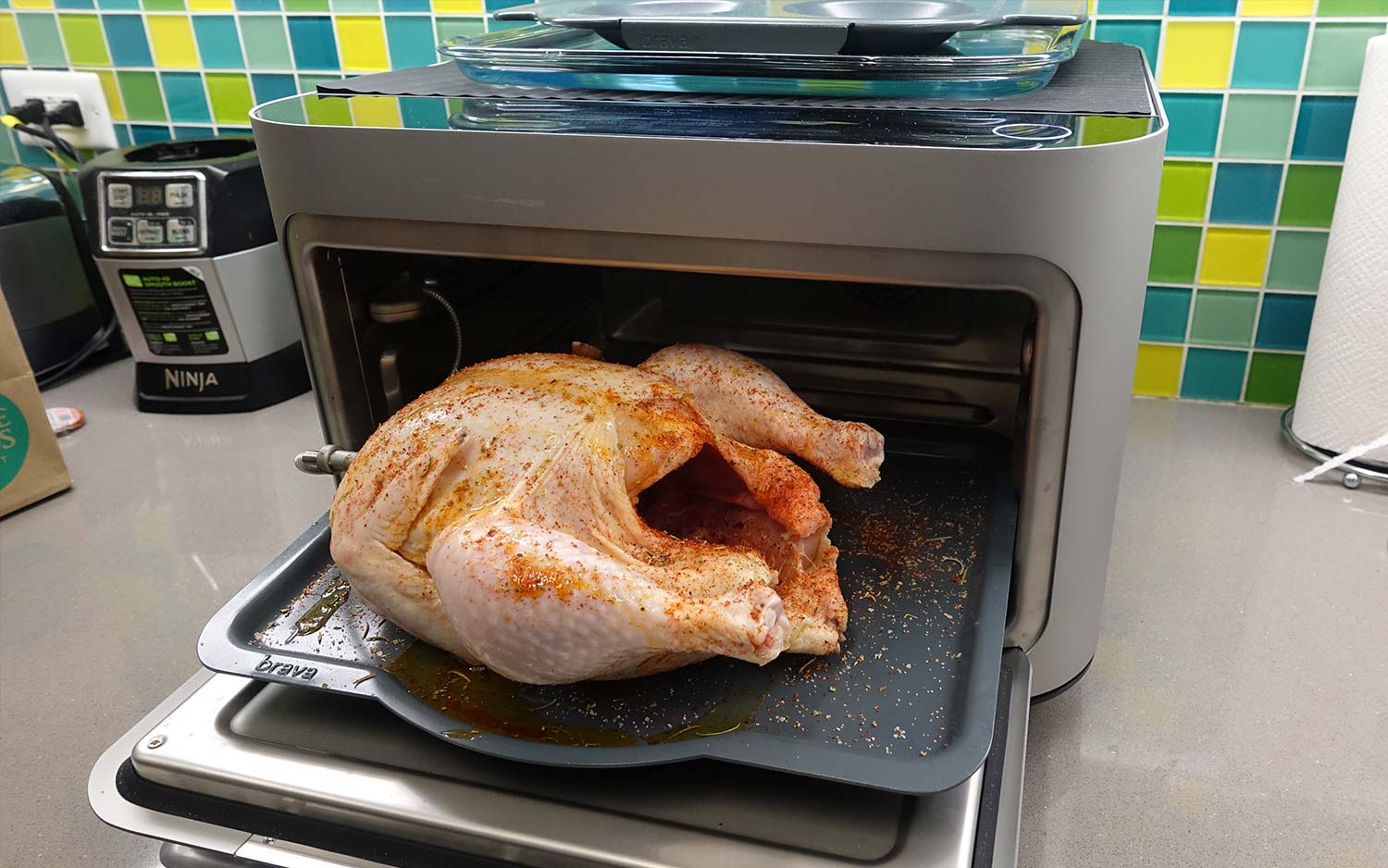
To accompany the chicken, I then roasted some russet potatoes, which I had cut into large slices. However, the Brava's tray could barely fit two cut-up potatoes; I had to overlap some of them.
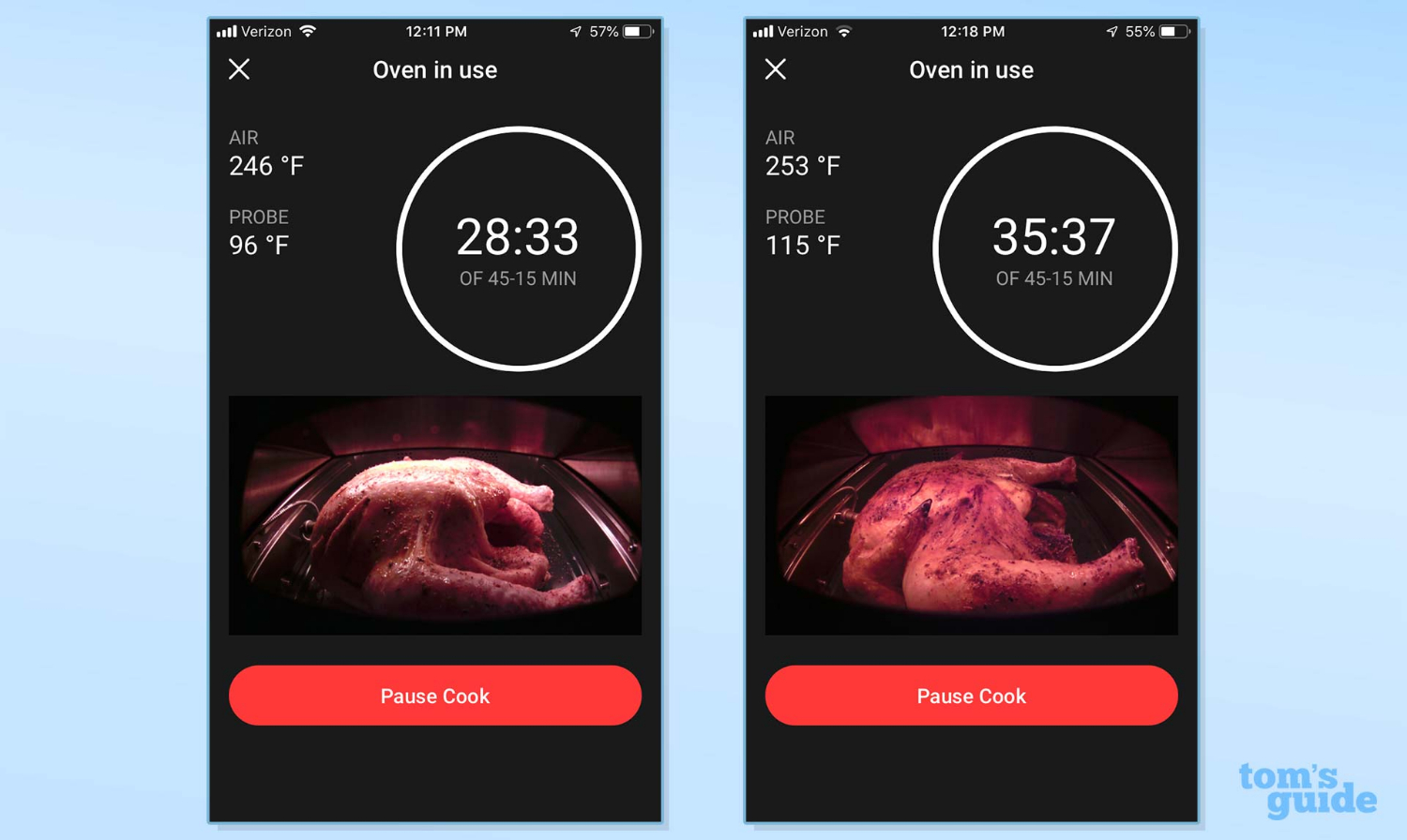
This resulted in some of the potatoes being slightly undercooked. Only those that were clearly exposed to the upper heating elements received a good sear. A second batch, which were not overlapped, came out much better, though I noticed ones near the corners of the tray weren't as cooked.
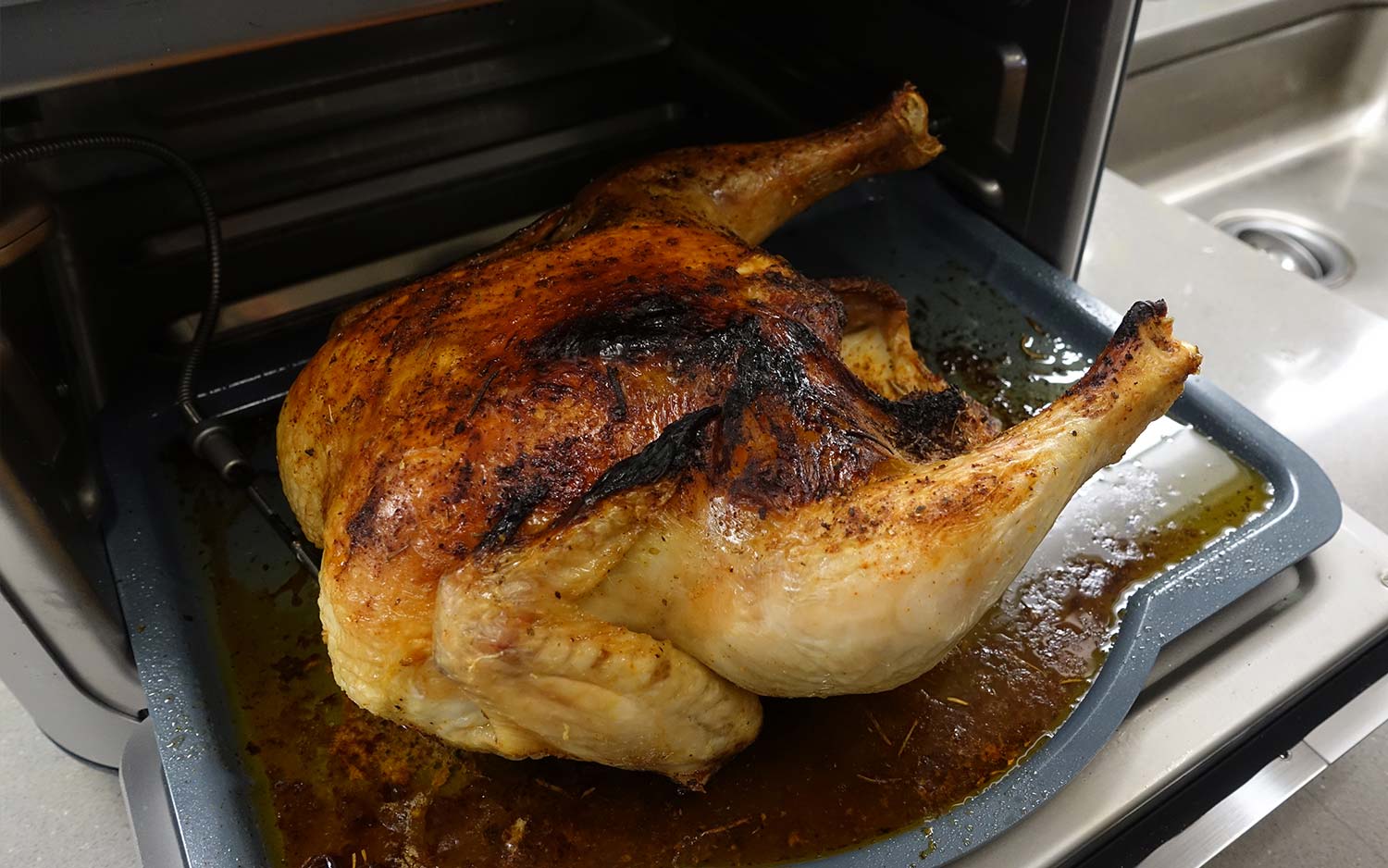
A similar-size chicken roasted in the June oven took 54 minutes, and because its tray was larger, I was able to fit a few more potatoes around its edges.
Pizza
The Brava also came out on top when baking the world's most perfect food. When I baked two basic cheese pizzas, the Brava did a slightly better job at "leoparding" the bottom (those nice browned spots) while getting the crust on top golden brown. The June wasn't bad by any means — and it recognized instantly that I slid a pizza in — but the Brava was just a little bit better.
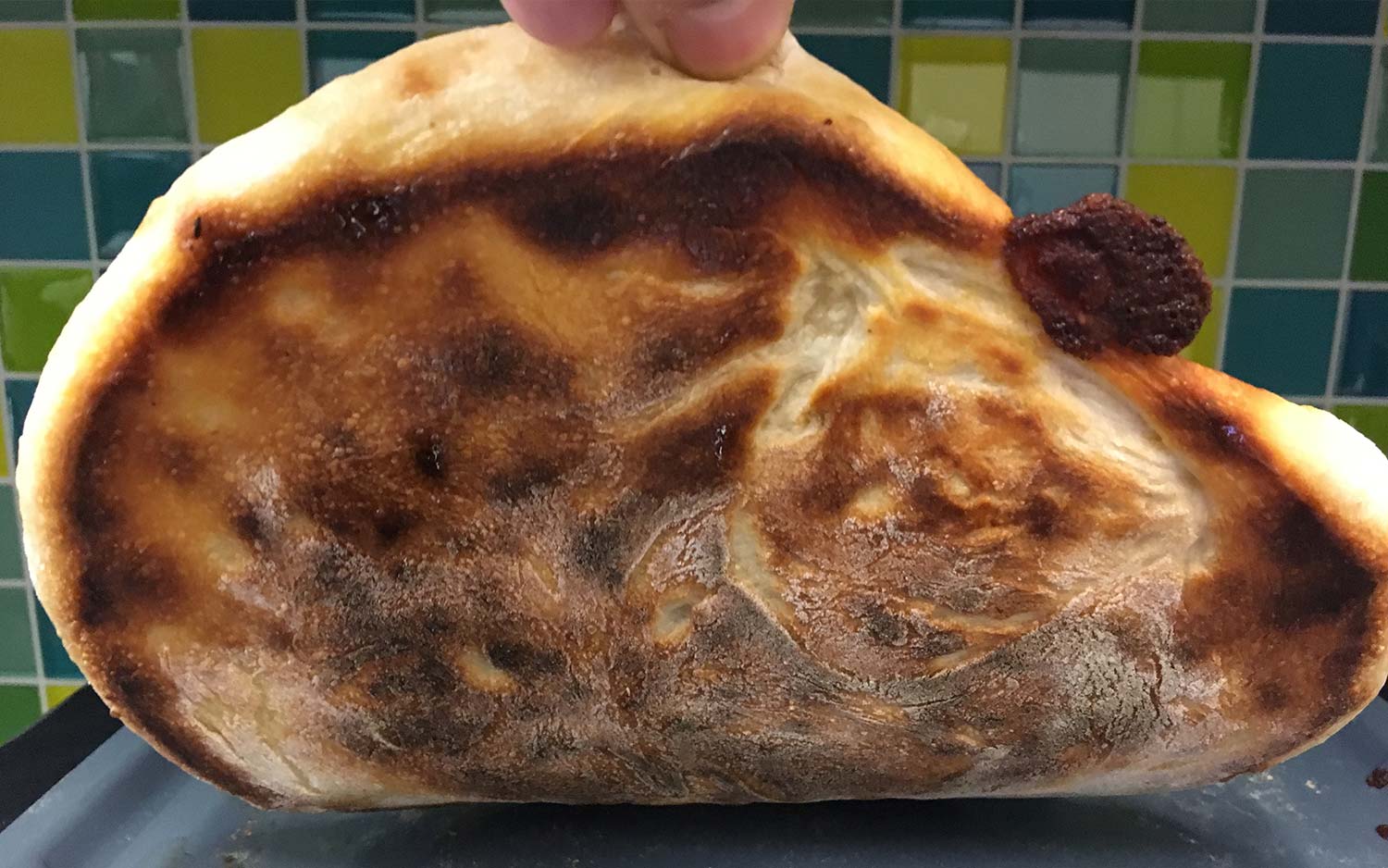
Cost
Of all the smart ovens, Brava's is the most expensive, at $1,095. By comparison, the June is $600.
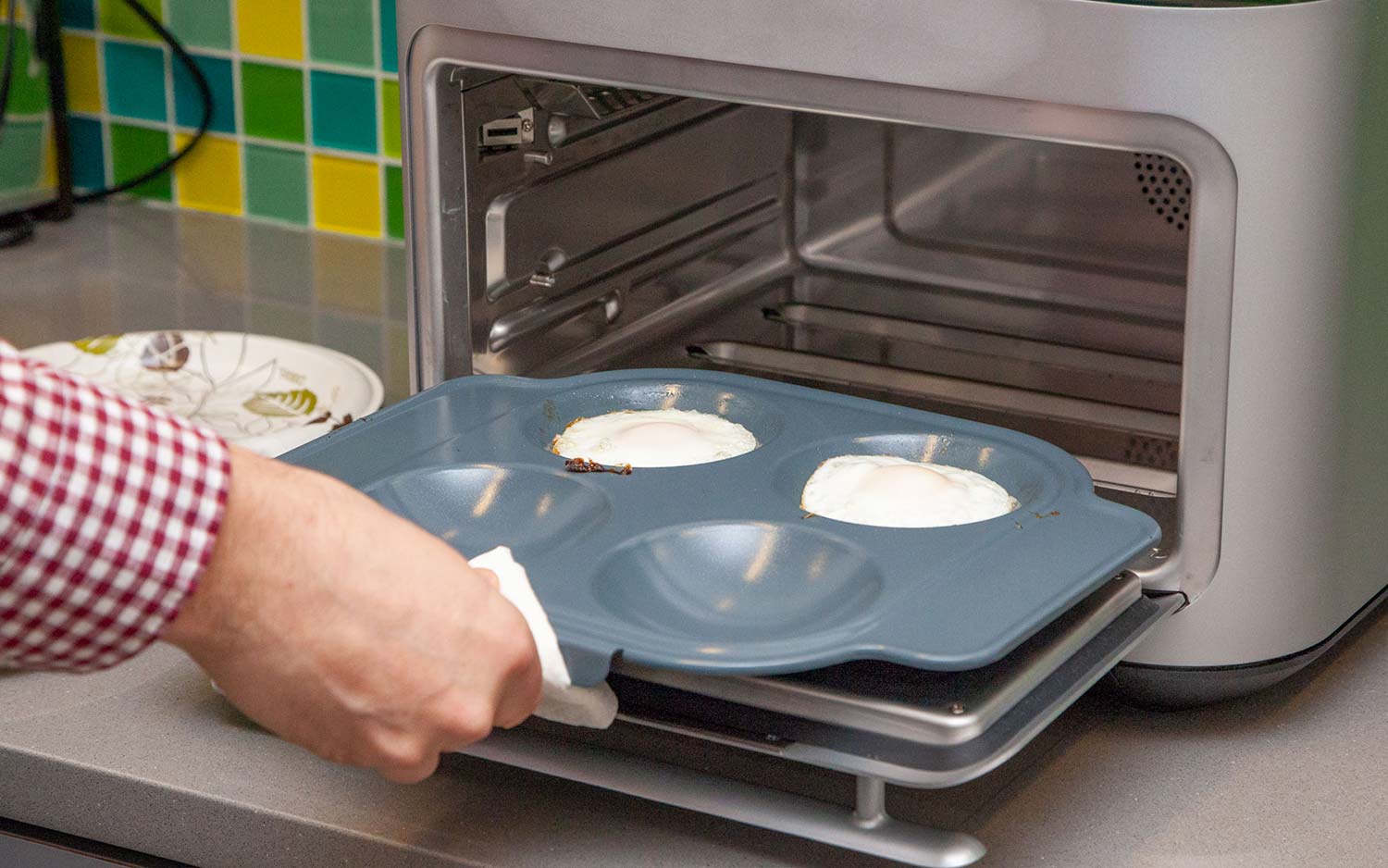
With the basic Brava kit, you get a metal tray, a glass tray, the temperature probe and a meal kit. Brava also sells the oven with a Chef's Choice kit for $1,250, which includes two metal trays, two glass trays, the temperature probe, an egg tray, a chef's pan and a ceramic-coated cast iron pan with a lid. Also included with the Chef's Choice kit is a $100 marketplace credit (where you can buy meal kits and accessories).
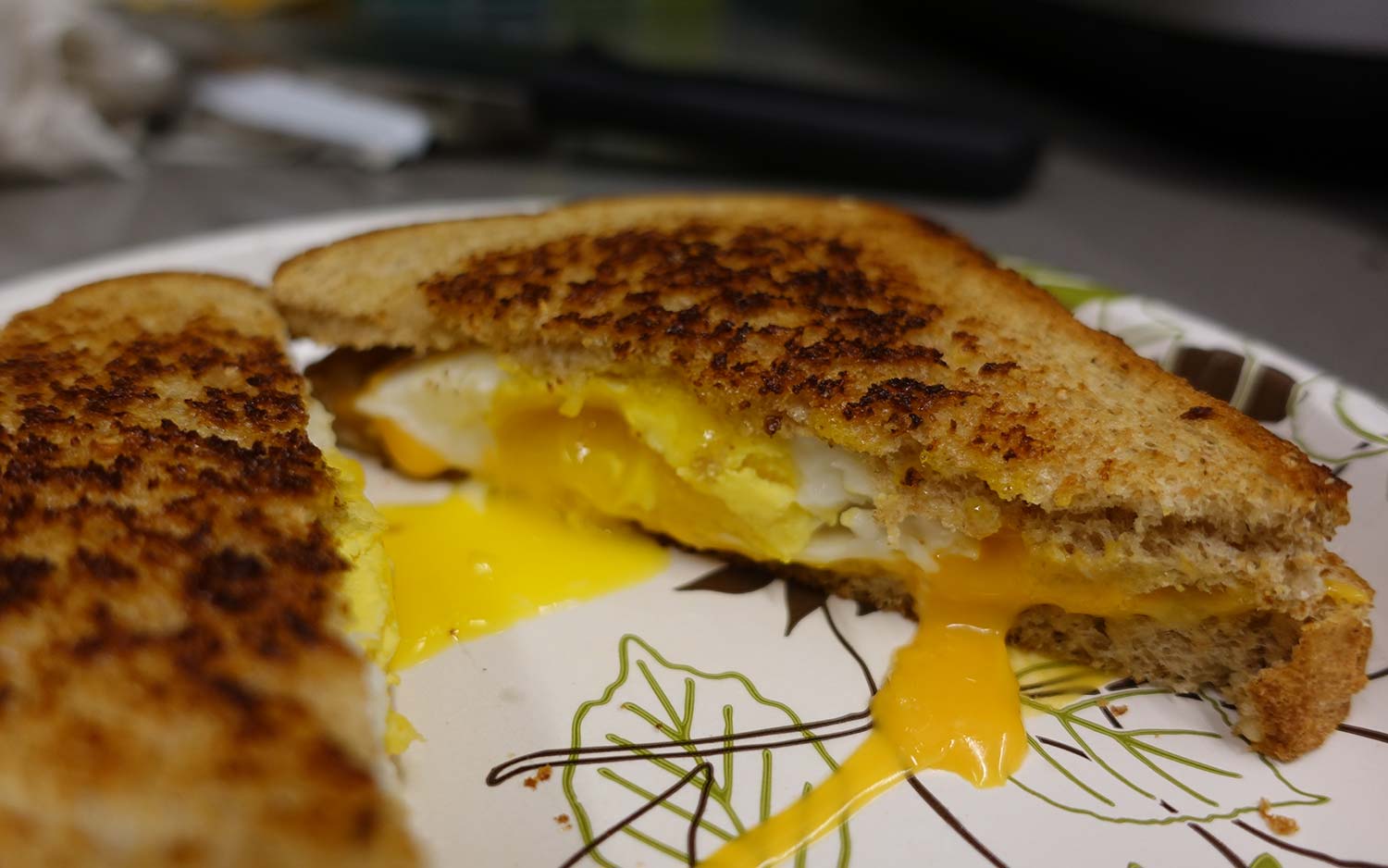
In addition to the cost of the oven itself, you'll need to purchase a Brava Plus subscription to get the following features:
1. Unlimited access to recipes
2. Ability to save cooking preferences for recipes
3. Feature updates (such as Air Fry and dehydrate)
4. Cooking consultations with Brava chefs
5. Smartphone control
MORE: Best Smart Kitchen Gadgets for Home Cooks
Both plans come with a free, two-year Brava Plus subscription, but afterward, it costs $9.95 per month. If you don't have a Brava Plus subscription, the oven will receive software updates, but only for such things as interface improvements.
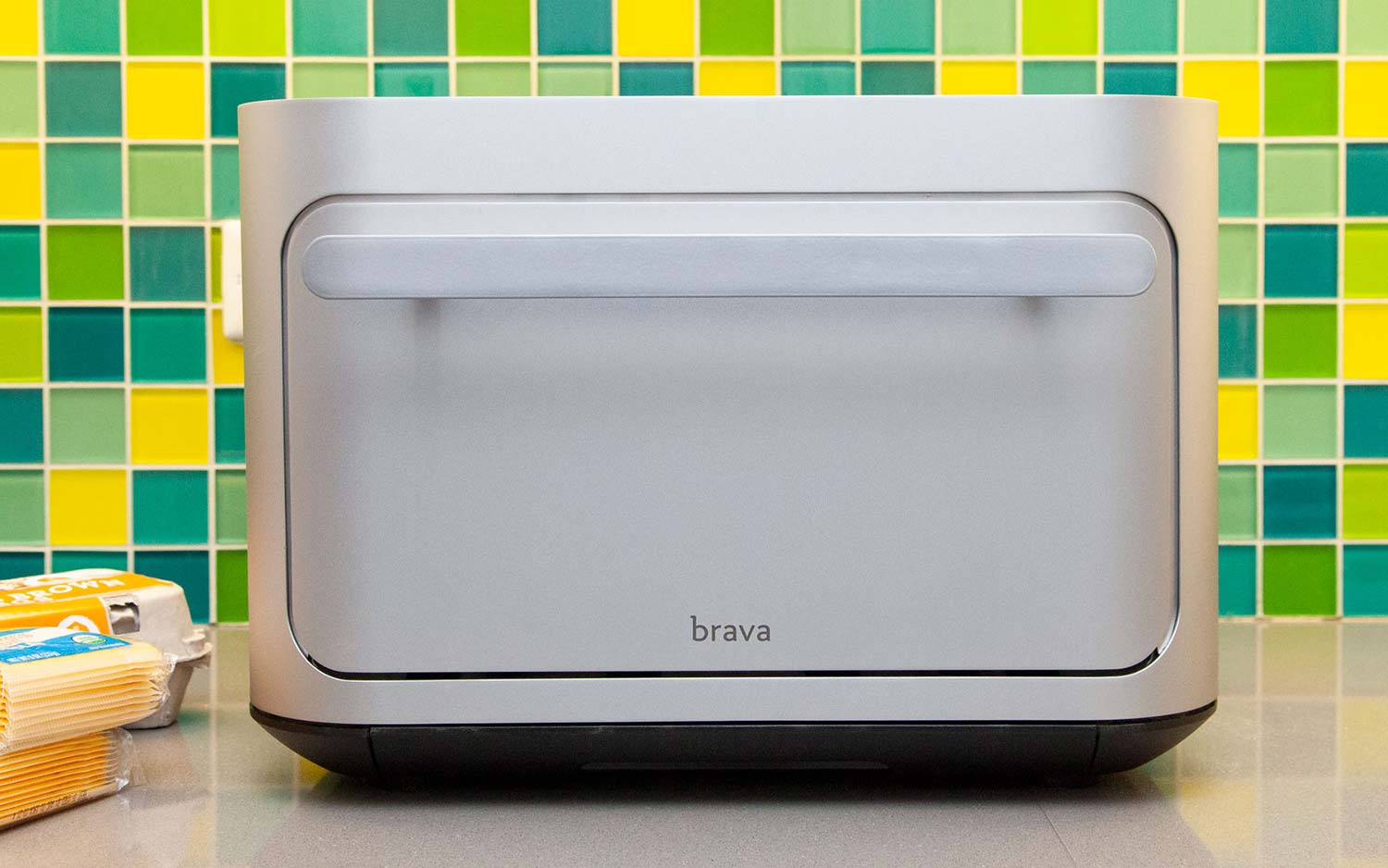
June's oven also requires a $4.99 subscription, but that's only if you want full access to its roughly 250-recipe catalog.
Bottom Line
At $1,000, the Brava is definitely a device for early adopters. Its set-and-forget system will save you some time in the kitchen, and the fact that it can heat up much faster than a traditional oven definitely has its merits.
However, its relatively small size will make it difficult to prepare full meals for more than two people at a time, and its high price — plus the fact that it's pretty hobbled without a monthly subscription — also limits its appeal. In side-by-side tests with the June, the Brava was better at putting a sear on steaks and cooking pizza, but the difference wasn't big enough to justify the Brava's premium price. Plus, I liked that I could actually see inside the June oven without needing to open an app.
The technology being tested out in the Brava and the June will make its way into full-size ovens in the near future. If you can't wait that long and have the cash to burn, the Brava will cook your food to perfection, but the June is the better value.
Credit: Tom's Guide

Michael A. Prospero is the U.S. Editor-in-Chief for Tom’s Guide. He oversees all evergreen content and oversees the Homes, Smart Home, and Fitness/Wearables categories for the site. In his spare time, he also tests out the latest drones, electric scooters, and smart home gadgets, such as video doorbells. Before his tenure at Tom's Guide, he was the Reviews Editor for Laptop Magazine, a reporter at Fast Company, the Times of Trenton, and, many eons back, an intern at George magazine. He received his undergraduate degree from Boston College, where he worked on the campus newspaper The Heights, and then attended the Columbia University school of Journalism. When he’s not testing out the latest running watch, electric scooter, or skiing or training for a marathon, he’s probably using the latest sous vide machine, smoker, or pizza oven, to the delight — or chagrin — of his family.
